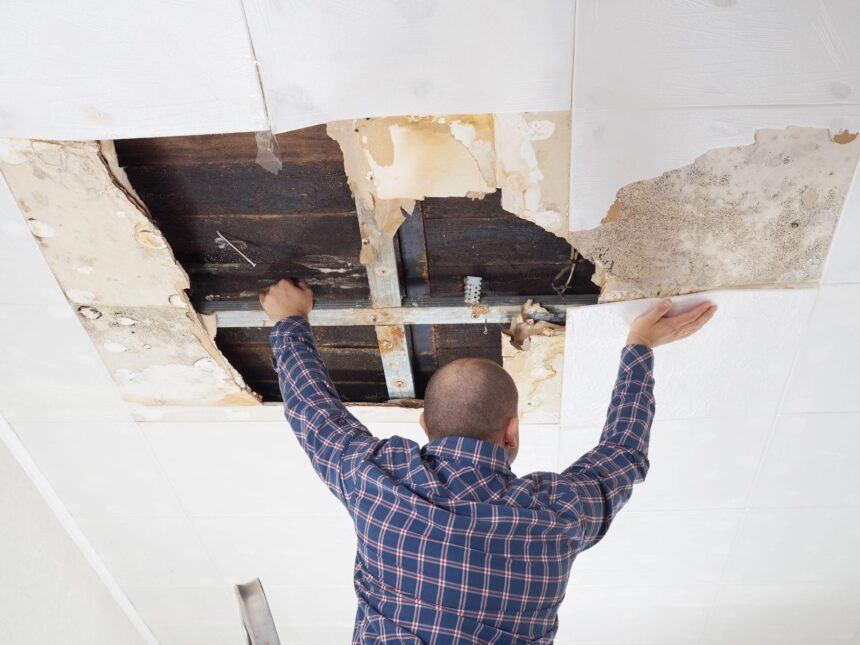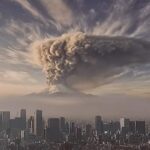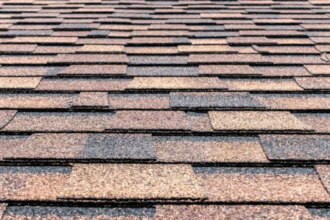Maintaining a healthy roof is paramount for the long-term safeguard and comfort of any home. A robust roofing system provides a protective barrier against the elements, ensuring the structural integrity of the house and the well-being of its occupants. However, roof leaks can begin insidiously, often with minor cracks, damaged shingles, or clogged gutters evolving into significant issues over time.
Roof leaks usually start due to a variety of reasons such as age, poor workmanship, severe weather conditions, or lack of maintenance. When minor leaks go unattended, they can lead to substantial damage. Addressing roof leaks promptly is crucial not only to prevent minor issues from escalating but also to mitigate the potential hidden dangers that come from ignoring them.
The primary objective of this article is to cast a spotlight on the hidden dangers associated with ignoring roof leaks and to underscore the importance of timely repairs.
Structural Damage and Degradation
Water infiltration is one of the most pernicious threats to a home’s structural integrity. When a roof leak occurs, water seeps through the layers of roofing materials and can penetrate into the attic and further into the core structure of the house. This moisture invasion can lead to extensive damage in several ways.
Firstly, continual exposure to moisture can weaken the foundation of the home. Water can seep into the base, causing it to shift or settle unevenly. This instability results in cracks, making the foundation more susceptible to further water damage. Additionally, once water reaches the wooden framework of the house, it can cause rot. Rotten wood loses its strength, posing a significant risk to the house’s structural soundness.
Secondly, compromised walls are another consequence of water infiltration. When the water manages to penetrate wall cavities, it can result in swelling, warping, and deterioration of wall materials, including drywall and plaster. This degradation not only affects the wall’s aesthetic appeal but can also compromise its structural integrity, leading to potential collapse under severe cases.
Visual signs of structural damage caused by roof leaks are often noticeable. Homeowners may observe water stains on ceilings or walls, sagging ceilings, peeling paint, and visible mold growth. These indicators are telltale signs that water damage is compromising the home’s integrity.
The long-term costs associated with structural repairs can be staggering. Apart from immediate repair costs, homeowners may face significant expenses for major reconstruction if the damage is extensive or has been left unattended for too long. Avoiding timely repairs could mean not just a larger monetary outlay, but also the inconvenience and stress of dealing with extensive home rehabilitation.
Mold and Mildew Growth
Roof leaks create the ideal conditions for mould and mildew to thrive. Both mould and mildew require moisture, warmth, and organic material to grow, all of which can be provided by a neglected roof leak. When water infiltrates the home, it wets building materials such as wood, insulation, and carpet, creating a breeding ground for mould and mildew.
The health risks associated with mould and mildew are significant. Prolonged exposure to mould spores can cause allergies, manifesting as sneezing, red eyes, skin rashes, and a runny nose. More seriously, mould can exacerbate respiratory issues such as asthma and bronchitis, and certain types of mould, like black mould, carry risks of severe infections and toxic reactions, especially in vulnerable individuals such as the elderly, infants, and those with compromised immune systems.
Areas in the home most susceptible to mould growth from roof leaks include the attic, ceiling spaces, and wall cavities. These locations often remain hidden from plain sight, allowing mould to proliferate unchecked. As a result, it can spread extensively before being detected.
Preventing and remediating mould and mildew starts with addressing the root cause – the roof leak. Ensuring that leaks are promptly repaired will minimise the moisture available to mould. Additionally, homes should be kept well-ventilated and humidity levels controlled. In instances where mould growth has occurred, professional remediation might be required to safely remove mould and restore healthy conditions.
Increased Energy Costs
Roof leaks significantly impact the energy efficiency of a home, leading to increased energy costs. Water intrusion through a leaky roof can compromise the effectiveness of insulation by moistening and damaging the insulation materials. Wet insulation loses its R-value, a measure of thermal resistance, which reduces its ability to prevent heat exchange between the home interior and exterior.
When insulation is compromised, the home loses heat more rapidly in the winter and gains heat more readily in the summer. This forces heating and cooling systems to work harder to maintain a comfortable indoor temperature, resulting in higher energy bills. Homeowners might notice a sudden spike in their utility bills as a sign of decreased energy efficiency due to roof leaks.
Signs your energy efficiency may be affected by a roof leak include unexplained increases in energy bills, drafts, uneven heating or cooling, and colder or hotter spots in certain areas of the home. These indicators suggest that the insulation could be compromised and necessitate immediate attention.
To improve energy efficiency after repairing roof leaks, it’s essential to replace any damaged insulation and ensure that the roofing materials are in good condition. Sealing air leaks and ensuring adequate ventilation are also fundamental steps in enhancing energy efficiency. Additionally, a professional energy audit can help identify areas where improvements can be made to restore optimal energy performance.
Electrical Hazards
The presence of water from roof leaks near electrical wiring and outlets creates a hazardous situation. When water comes into contact with electrical systems, it can cause short circuits, increase the risk of electrical fires, and pose a threat of electrocution.
Short circuits occur when water bridges the gap between electrical conductors, causing an unintended flow of electricity. This can damage electrical devices, create sparks, and potentially ignite a fire. Electrical fires are particularly dangerous as they can spread quickly and result in significant damage before help arrives.
Moreover, electrocution is a serious risk when handling electrical equipment in a water-damaged area. This can result in severe injury or even death.
To mitigate these risks, safety precautions are paramount if a roof leak is suspected to impact electrical systems. Homeowners should immediately turn off the power supply to the affected area and avoid using electrical appliances or touching electrical outlets until the area is thoroughly inspected. It’s crucial to engage a licensed electrician to assess and repair any water-related electrical issues safely.
After a roof leak, it is essential to have electrical systems inspected and potentially rewired to ensure safety and compliance with current standards. This step guarantees that all damaged components are replaced or repaired, minimising future risk.
Pest Infestations
Neglecting roof leaks can create entry points for pests such as rodents and insects. Gaps and cracks in the roofing structure, softened by water infiltration, provide an inviting gateway for various pests looking for shelter and resources.
Pest infestations pose a double threat: they impact health and further deteriorate the home’s structural integrity. Rodents, for instance, can gnaw on electrical wires, increasing the risk of fires, and carrying diseases that affect humans. Insects such as termites feed on damp wood, exacerbating rot and weakening structural components.
Indicators of a pest problem due to roof leaks can include droppings, gnaw marks, nests in the attic or walls, hearing scratching noises, and visible pest sightings. These signs suggest an established infestation that needs immediate attention.
Preventative measures against pest issues related to roof leaks include timely repair of leaks, sealing entry points, and maintaining clean and dry conditions within and around the home. Regular inspections by pest control professionals can help identify potential issues before they become severe.
Conclusion
The dangers associated with ignoring roof leaks are vast, ranging from severe structural damage and health risks to increased energy costs, electrical hazards, and pest infestations. Each of these hidden dangers underscores the critical importance of timely roof repairs to preserve the integrity and safety of your home and the well-being of its occupants.
Timely roof repairs can avert costly and extensive damage, maintain a comfortable living environment, and protect the health of individuals residing in the home. Regular roof inspections and addressing any signs of roof plumbing issues early can prevent small leaks from becoming significant problems.
Homeowners are encouraged to routinely inspect their roofs, stay vigilant for signs of leaks, and seek professional assistance if any issues are detected. Proactive maintenance and timely repairs are key to safeguarding one’s home against the hidden dangers of roof leaks.













